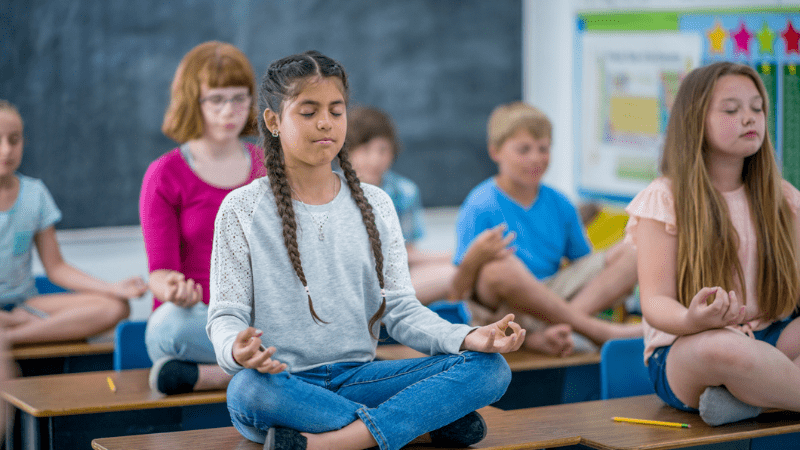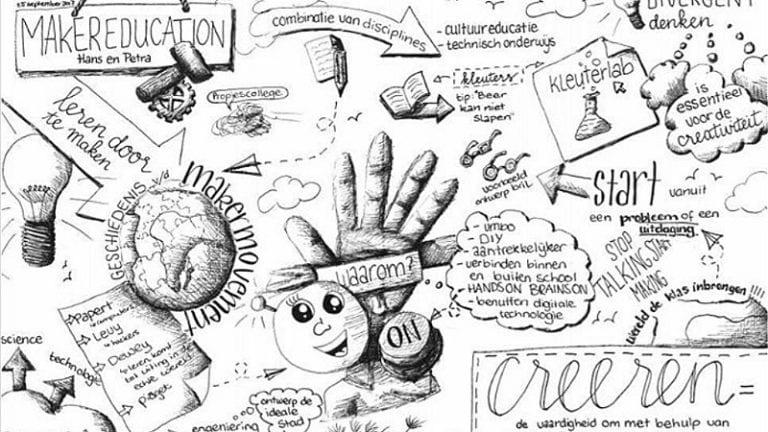We all start the school year by introducing and reinforcing our class procedures and expectations. As the year goes on, however, we can become a bit lax. Fortunately, sometimes all it takes is a good beginning to help get the rest of the day back on track. With that in mind, here are 10 fast fixes for the first five minutes of class.
1. Be honest
Don’t be afraid to be upfront about it with your students about wanting to revisit your classroom expectations and procedures. Even adults feel a sense of discomfort when we are suddenly asked to do something differently from the way we’d had been. Our students are no different. Let them know you’ve been unhappy with the way class has been starting each day. Tell them that the way you begin is important. It sets the tone for that day’s learning activities. And you want that tone to be a pleasant, enthusiastic one. While you may have some students who don’t want this change, at least you’ve prepared them for it.
2. Greet them at the door

This can be a tough one, especially for teachers who meet with different students/classes throughout the day. Planning to end the previous class a bit early so you can get to that door is challenging, but it will pay off. This greeting lets us build a positive classroom culture while simultaneously setting the tone for class each day. We can remind students, especially the ones who often need an extra prompt or two, what they should do once they reach their seats. This cuts out the frustrating time we often end up spending trying to shout over chatting students, not yet in their seats, when the bell rings.
3. Begin with something happy
One of the simplest ways to set the right tone for class is to start with something that makes you and your students happy. I know a teacher who finally got through to a really tough group of high schoolers by starting their Thursday classes with 10 minutes of “Throwback Thursday” photo sharing. He shared a picture of himself from his childhood and asked them to do the same. It wasn’t directly tied to their curriculum—but it brought the class together. Rather than spending the first 10 minutes yelling at the students to get out their materials, stop talking, and get ready to work—he spent 10 minutes getting to know his students. He showed he cared about them. He laughed with them. No, they didn’t all become model students, but behaviors improved, and my teacher friend started enjoying the class a lot more. Sometimes, starting with a fun question or activity is the perfect “in” for more academic requests.
4. Ask the right question

The right question is such an awesome tool to use during the first few minutes of class. A powerful question related to the day’s lesson can enhance students’ natural curiosity. It can challenge commonly held beliefs, leading to dynamic discussions. Here are several question types that can spark student engagement:
- Prediction Question: Ask a question your students won’t know the answer to until the end of the day’s lesson. This gives them permission to predict without worrying about being right. It also gives them a reason to want to engage with the rest of the lesson, hoping to find out if they were right or wrong.
- Review Question: Ask a question about a previous lesson. This gives students a confidence boost at the start of class by asking them something they already know. It also acts as a quick formative assessment tool, showing you which students might need a quick review.
- Opinion Question: Ask a question every student can answer. It’s a powerful way to get everyone involved in the lesson. Increase engagement even more by making the question slightly controversial (but always school-appropriate). Your students will clamor to voice their point of view, and you can use that interest to lead into the lesson.
5. Take a poll
Questions are great, but you can’t stand in front of your class and ask a question every day. Students, like all of us, need variety. Polls are a great alternative and are a quick, fun way to start class. Online apps like PollEverywhere and Mentimeter make it super simple to create attractive digital versions, but having your students raise their hands or put a tally mark on the board works too.
6. Get them writing

Having a prompt for students to respond to in writing is one of the easiest ways to start class in a focused, purposeful way. The most important thing to remember about this is to make sure that the writing is short, accessible, and purposeful.
- Short: Start of class writing assignments should take no longer than 5-10 minutes to complete.
- Accessible: The prompt should be something that every student can respond to. This ensures that the entire class will be able to engage in the discussion of the prompt and feel safe participating without looking foolish.
- Purposeful: While it’s OK to ask fun, non-curriculum-related questions once in awhile, it shouldn’t be the norm. Students will learn that the questions don’t really matter to the rest of class and can lead to lack of participation and interest. Instead, try to make sure that the prompt relates to what is happening in the lesson that day.
7. Ask them to draw

Asking students to create a mind map, illustration, chart, or other visual representation of what they learned in a previous lesson is an awesome way to review information. Science backs this up. When we draw, we force our brains to process the information in a different way, making it far more likely that we will understand and remember it. This may not come naturally to your students, so be prepared to show them examples and give them ideas at the start.
8. Encourage them to make connections
This is sort of the opposite of asking them to draw/illustrate to demonstrate their understanding. Instead, start class by showing your students a seemingly unrelated image and ask them to make connections between it and the topic you’re learning about in class. How is a plant cell like this photograph of a crowded park? What does this painting of a storm have to do with the novel we’re studying in class? By searching for potential connections, your students will be creating new pathways of understanding in their brains. And you’ll love the creative connections they come up with.
9. Practice mindfulness
This one is especially useful if you have a class that meets at a challenging time of the school day. First thing in the morning, right before or after lunch, or the last class of the day are perfect examples of class periods where the clock can work against you. Students are sleepy, hungry, wound up, or ready to be done. When this is the case, starting the class with five minutes of mindfulness can do wonders for refocusing distracted students and getting them ready to learn. Choose something simple to start, a guided breathing exercise or brief meditation. As it ends, remind students that they are now ready to begin having taken time to prepare their mind and body to learn.
10. Start with a read aloud
Elementary and English/Language Arts teachers have known this for decades, but reading aloud to students is a wonderful way to gain their attention and focus. There’s something about someone reading a story to us that makes almost everyone quiet down and pay attention. Additionally, there’s a ton of evidence that read alouds benefit all students, not just those in elementary school. What’s great about starting your class with 5-10 minutes of a read aloud is that it works for any subject or grade level. Science and math teachers can find awesome nonfiction books to share with their students. Social Studies teachers can read historical fiction. All teachers can find picture books that enhance their lessons.
Do you have a great activity for the first five minutes of class? Come share on the WeAreTeachers HELPLINE group on Facebook.



